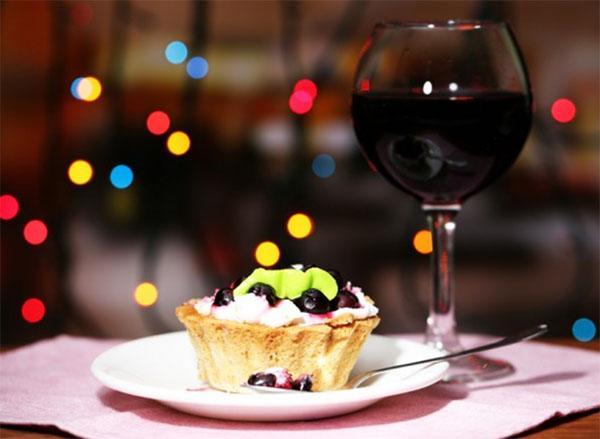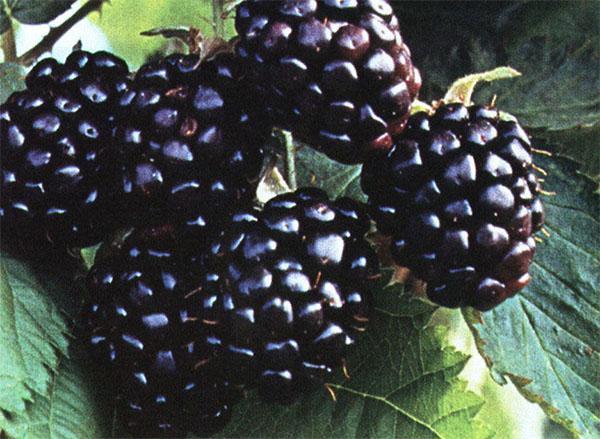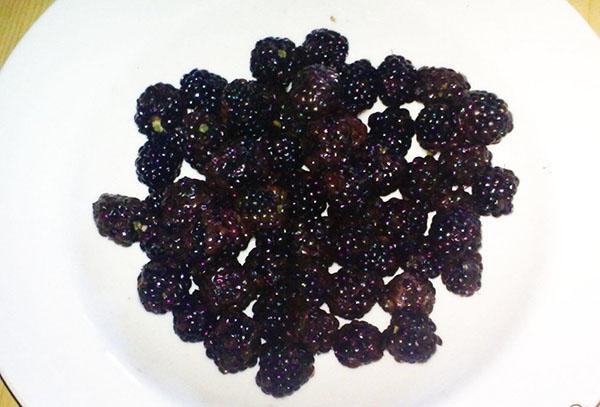Original, tasty, aromatic blackberry wine
 Homemade blackberry wine is easy to prepare, although the fermentation process takes a long time. People with experience in winemaking and beginners will cope with the task and delight themselves and loved ones with an unusual aromatic drink. Read:homemade grape wine.
Homemade blackberry wine is easy to prepare, although the fermentation process takes a long time. People with experience in winemaking and beginners will cope with the task and delight themselves and loved ones with an unusual aromatic drink. Read:homemade grape wine.
Ingredients

To make wine you will need:
- blackberries - 2 kg;
- water - 1 l;
- sugar - 1 l;
- raisins - 50 g.
You can do without raisins. It is used unwashed as a safety net, in case there is little wine yeast on the original berries. Some housewives use a bag of wine yeast instead of raisins. The principle of working with them is similar to working with raisins.
Do not use metal objects when making homemade wine.
The contents of the container enter into a chemical reaction with the metal and the result is not wine, but a chemical composition that is unusable. To stir the contents, use wooden, plastic tools, or stir with a clean hand.
For making wine, you can use not berries, but ready-made juice. In this case, operations are carried out in the same way, excluding the stage of processing berries. You can add alcohol or vodka to homemade wine. But in any case, a fragrant slightly tart drink is obtained.
Sequencing
Recipe for making wine from blackberry similar to traditional recipes from other berries:
- The source material is sorted out. Spoiled, rotten berries are discarded.

- The blackberry is washed, laid out in 1 layer in order to glass the water.
- Clean berries are kneaded until smooth.

- The puree is placed in a wide-necked container.
- Water, raisins, 400 g of sugar are added to the mashed berries. Mix thoroughly.

- The container with the mixture should be placed in a dark room at room temperature. Cover with cheesecloth and leave to ferment for 3-4 days. Stir the contents of the container periodically to distribute the enzymes evenly.
- During this period, it is necessary to observe the dishes with a mass. The appearance of a specific sour smell indicates the beginning of fermentation. Foam collects on the surface, the mixture fizzes. Such manifestations indicate that the process of making blackberry wine at home has begun.

- If such signs are found, the contents of the container are filtered through cheesecloth, the mass is carefully squeezed out. In the further process, it will not be useful, so it is thrown away.
- The purified liquid is poured into a fermentation vessel and filled to 70% of its volume.
- Add 300 g of sugar to the mass, mix, cover with a water seal or a rubber medical glove. A small hole should be made in the glove in order for gas to escape from the container. Better to use a water seal. Its design is planned in such a way that it allows fermentation gases to escape without letting in air.
- Place the vessel with liquid in a dark place with a constant temperature of 18-23﮿ С.

- Open the container after 4 days. Drain a small amount of wine into a bowl, add the remaining sugar to it, stir until completely dissolved and pour back into the common container. Cover with a water seal.
- After this operation, the vessel with wine is no longer opened until the end of the fermentation process.
- After 30 - 50 days, sediment appears at the bottom. The liquid becomes light and slightly transparent. Gas bubbles stop appearing in the water seal. If a glove was used, it deflates at this stage.
- It's time to pour the contents into another bowl. The operation is performed carefully using a tube. The sediment must not get into a clean container
- At this moment, a tasting of the resulting drink is held. If necessary, the taste is corrected by adding sugar, if desired, alcohol. If sugar is added to the young wine, then the container is again closed with a water seal. If there is no need for additional sweetening, then the vessel is filled to the top, so as to avoid contact with oxygen.
- The aging process begins. The wine is placed in a cool room for 20-30 days. This period is conditional. The longer the wine is aged, the more valuable it will be.

The process of making blackberry wine is considered complete when the sediment stops appearing.
If oxygen enters the container during the fermentation stage, then vinegar will be obtained instead of blackberry wine.
Periodically, the wine is poured into another container, leaving a sediment at the bottom of the previous one. This manipulation avoids bitterness in the final product. When they notice that no precipitate falls out, the cooking process is over.
 If all the rules have been followed, then the wine will turn out to be bright, aromatic with a pleasant peculiar taste.
If all the rules have been followed, then the wine will turn out to be bright, aromatic with a pleasant peculiar taste.